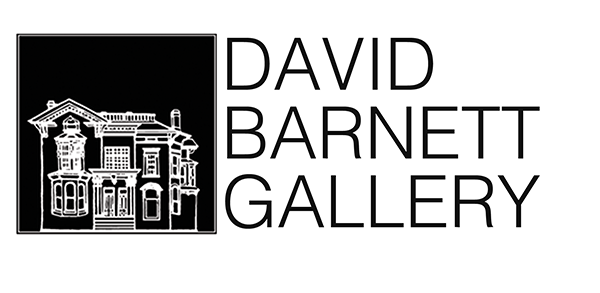Marc Chagall was born in 1887 into a Hasidic Jewish family near Vitebsk, Russia (today Belarus). He traveled to Paris in 1910, and was influenced by avant-garde styles, particularly Cubism, Expressionism, and Fauvism. Despite a cosmopolitan artistic education that also took him to St. Petersburg and Berlin, he was never far from the early influences of his youth in Vitebsk, and the impact of Jewish folklore and Russian folk art. Images of childhood appear in his art as dreams or memories. His works have a fantastical, fairy-tale quality that rejects naturalism and narrative. Notably, the artist was a formative influence on Surrealism by asserting the primacy of the subconscious in artistic creation. Chagall, however, was a highly individual artist, never associated with a single method or movement, using elements of avant-garde styles to express his own personal vision. He was also a brilliant colorist, prompting Picasso to say in the 1950s: “When Matisse dies Chagall will be the only painter left who understands what color really is.” During World War II, escaping the Nazi threat to the Jews, Chagall resided in the United States for seven years. He returned to the south of France where he lived and worked for the rest of his life. He died in St. Paul de Vence in 1985 at age 97. The artist was extremely prolific in his long career, producing paintings, fine art prints, drawings, book illustrations, stained glass, ceramics, and tapestries. He is remembered for his dual reputation: a pioneer of modernism and a major Jewish artist.
Chagall’s dazzling color sense was realized in his stained glass project for the Abbel Synagogue of Hebrew University’s Hadassah Medical Center in Jerusalem beginning in 1960. The synagogue is only one of four religious buildings with complete sets of Chagall windows. Several windows were destroyed during the Six Day War in 1967, and Chagall recreated the windows of the synagogue. The artist created 86 stained glass works in his lifetime. According to Jean Leymarie, who authored a book about the Jerusalem windows in 1967, Chagall envisioned the synagogue as “a crown offered to the Jewish Queen,” and the windows as “jewels of translucent fire.” Chagall devoted two years to the project and when it was completed, the windows were exhibited in Paris and at the Museum of Modern Art in New York. They were installed permanently in Jerusalem in February of 1962 and unveiled at a ceremony that Chagall attended. He said: “This is my modest gift to the Jewish people who have always dreamt of biblical love, friendship and of peace among all peoples. This is my gift to that people which lived here thousands of years ago among the other Semitic people.” The David Barnett Gallery is pleased to present the twelve original lithographs that are reproductions of the windows.
The twelve windows represent the Biblical twelve tribes of Israel, the sons of Jacob: Reuben, Simeon, Levi, Judah, Zebulun, Issachar, Dan, Gad, Asher, Naphtali, Joseph, and Benjamin. Following the Jewish prohibition of the representation of the human figure, which is an image of God, the Jerusalem windows symbolize the twelve tribes who were blessed by Jacob and Moses in the lyric verses which conclude the Books of Genesis and Deuteronomy. According to Leymarie during their wandering in the desert, the tribes camped in groups of three on each side of the Arc to keep watch at the four cardinal points. In the synagogue, where the windows are distributed in the same way, the tribes form a symbolic guard of honor around the tabernacle.” Chagall incorporates his personal iconography of Jewish folk culture into the windows with a menagerie of animals—cows, chickens, goats, sheep, horses, birds, fish, and more--that harken back to his childhood in Vitebsk and have important significance for the windows. The animals are emblems of the tribes and alsointegrate the traditional relation of the signs of the Zodiac and the tribes. “The cycle of the tribes, which is the cycle of human generations and is associated with astrology, paths of the heavens, the turning hours and months (all equally associated with the number twelve), is swept on by the universal dynamic of light, the divine emanation of all earthly existence. Finally, the system thus established by the windows perfectly echoes the Biblical cycle. Each is an independent whole but each interacts with the other to magnify…a common message: the destiny of Israel in the Promised Land and, through Israel, the destiny of man on earth.”
Rich color is the dominant motif of the windows, as Leymarie wrote: “The essence of the Jerusalem Windows lies in color, in Chagall’s magical ability to animate material and transform it into light.” The hues of the windows are shades of blue, yellow, red, and green. The colors refer to a passage in Exodus, Chapter 28, that compares precious stones in Aaron’s priestly garments to the twelve tribes: “And the stones shall be with the names of the children of Israel, twelve, according to their names, like the engravings of a signet; every one with his name shall they be according to the twelve tribes.” Indeed, the windows, with their radiant color transfigured by light, are jewels on a monumental scale. The works reflect the artist’s painting style with animals floating through the colorful windows. But the whimsy is tempered by the seriousness of the Biblical messages. Chagall described his feelings about the windows at the dedication ceremony in 1962: “For me a stained glass window is a transparent partition between my heart and the heart of the world. Stained glass has to be serious and passionate. It is something elevating and exhilarating. It has to live through the perception of light. To read the Bible is to perceive a certain light, and the window has tomake this obvious through its simplicity and grace…” For Chagall, the windows were symbols of hope and the resilience of the Jewish people.
